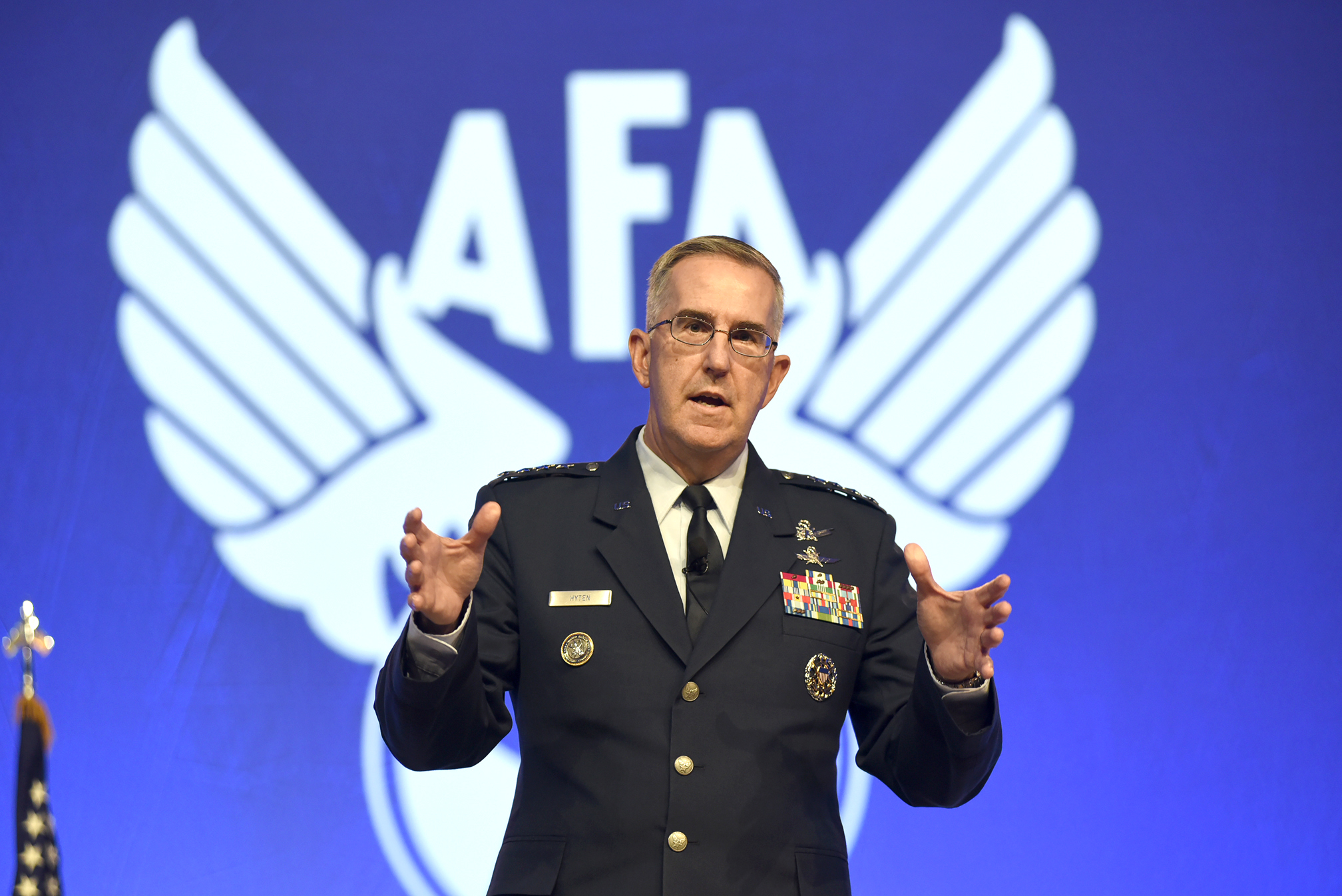
US Strategic Command boss Gen. John Hyten address the audience at AFA's Air, Space & Cyber Conference in National Harbor, Md., on Sept. 20, 2017. Staff photo by Mike Tsukamoto.
The United States needs to catch up in the realm of strategic deterrence, US Strategic Command boss Gen. John Hyten told the audience at ASC17 Wednesday.
“Strategic deterrence in the 21st century does not equate to 20th century deterrence,” he said.
The mission is no longer focused just on nuclear weapons, he added, but “involves any strategic attack on the United States. That attack can come through space, it can come through cyberspace.” Deterrence is now a “multi-polar, multi-domain problem,” and “we have to figure out what that means.”
To tackle the issue, Hyten is working to reorganize and streamline STRATCOM to make it “the ultimate warfighting command.”
Currently, STRATCOM has a sprawling command chart with six nuclear task forces, three centers, three joint component commands, five service components, and a sub-unified command for cyber. The new structure will create four major joint components for air, maritime, space, and missile defense. STRATCOM is losing cyber as it stands up its own unified combatant command.
The change makes it “much easier” to connect STRATCOM with geographic combatant commanders, Hyten told Air Force Magazine. “It’s a warfighting structure that everybody recognizes, which means they know exactly where to plug in.”
When there were 18 elements, some with significant overlap in mission profile, combatant commands had difficulty working smoothly with such a behemoth organization. After the change, STRATCOM will look more familiar.
“Every combatant command has a JFAC, every combatant command has a maritime component,” Hyten said, “So now their J-3 can call my J-3. Their J-5 can talk to my J-5.”
But reorganization alone will not adequately address the challenges of today, Hyten told Air Force Magazine. He also sees a dearth of innovative thinking across the nation on changes in the deterrence landscape. That’s why Hyten has formed an academic alliance, including 44 universities to date, “all involved with us on looking at strategic deterrence in the 21st century.”
Alliance partners come to conferences and symposia organized by STRATCOM, but Hyten has also put together a small team that travels to universities to take advantage of some of the best deterrence work today.
Hyten thinks the alliance is working. “I see a conversation emerging,” he said, mentioning efforts at Georgetown University, the Sam Nunn School of International Affairs at Georgia Tech, and the Washington D.C.-based Nuclear Threat Initiative.
“I see a lot of good work going on in the academic side,” he said. “What I don’t see coming up in any large way yet are the traditional think-tank publications.”
While good work is being done on a range of particular threats, “who puts all of the pieces together and talks about what deterrence is in the 21st century?” Hyten asked. After a hesitation, he admitted, “The best stuff I’ve read is Chinese, not American.”